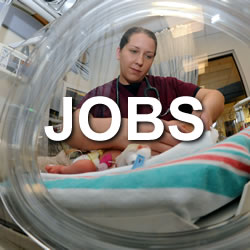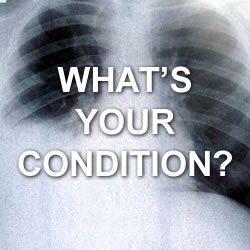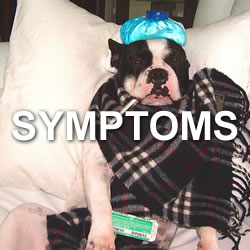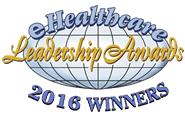Cancer Screening: Life-Savers or Expensive Luxury?
The HWN Team | Heads or Tails

image by: Bill Branson
As health expenditures soar cancer screening has come under scrutiny especially when it comes to mammograms
Cancer is the second cause of mortality in the developed world. One of the most important developments in cancer research in recent years have been screening techniques that detect cancer in its early stages. The earlier the cancer is detected, the better are the chances of treatment and hopefully, the prognosis is better!
The most common cancer screening methods used today are mammography for breast cancer, the Pap test for cervical cancer and the prostate specific antigen (PSA) for prostate cancer. Breast cancer screening starts at age 40 in both the U.S. and Canada, but in most other countries including Europe screening starts at 50 and then every 2 to 3 years, whereas the Pap is usually recommended three years after the first sexual intercourse. PSA tests are another story.
According to the American College of Obstetricians and Gynecologists (ACOG), cervical cancer rates have fallen more than 50% in the past 30 years in the U.S. due to the widespread use of the Pap test. 1 The life-saving benefits of mammograms are less clear but still advocated by many health groups and professionals. A 2003 study gave the following figures: two out of 1,000 women in their 40’s, four out of 1,000 in their 50’s, and six out of 1,000 in their 60’s are saved through mammogram screening. 2
However, cancer screening techniques have come under scrutiny as health care expenditures soar in developed countries. Do we save more lives with screening at an earlier age 40 vs 50? And are these screening tests reliable? As an example, mammograms remain the gold standard for breast cancer screening despite the fact that the technology is far from perfect, to say the least.
What does current scientific evidence tell us?
After extensive review the U.S. Preventive Services Task Force (USPSTF) in November 2009 issued new federal guidelines recommending that the starting age for biennial mammograms be raised from 40 years to 50 and concluded that current evidence is insufficient to assess the additional benefits and harms of screening mammography in women 75 years or older. 3 And in 2011 the Canadian Task Force on Preventive Care followed suit. 4
As expected, these recommendations created quite a furor. And not surprisingly most of the resistance to change has come from the organizations dedicated to improving the survival rate of breast cancer. So, which group is right? 'Screen Less' or 'Screen Same'
Here's the reasons for 'Screen Less':
Overusage
Like in the case of the PSA-prostate cancer issue, mammogram screening leads to over diagnosis and overtreatment of breast cancer. Experts say that many cases of breast mass detected by a mammogram are benign or not aggressive and just disappear with time or go into spontaneous remission. According to a 2008 study: “…it appears that some breast cancers detected by repeated mammographic screening would not persist to be detectable by a single mammogram at the end of 6 years. 5 This raises the possibility that the natural course of some screen-detected invasive breast cancers is to spontaneously regress.” Detection by mammograms, therefore, often leads to false alarms and unnecessary confirmatory tests, including invasive biopsy.
Too many false positives
One of the shortcomings of mammograms is the high rate of false positives which lead to false alarms and the unnecessary burden of worry and fear and also, ultimately results in many unnecessary procedures including invasive biopsies.
Screening at 40 is too early
The task force does not deny the benefits of breast cancer screening. However, based on the analysis of the current state of evidence, it doesn’t make much of a difference if screening starts 10 years later at age 50. They compared breast cancer mortality rates between the U.S. and other developed countries (UK, most of Europe) that screen only starting at age 50 and found no significant differences. Their conclusion is that screening at age 40 is not necessary and considering the high rate of false positives, why should patients have to worry 10 years too early?
Radiation exposure
Women undergoing mammograms are exposed to low levels of radiation that may present some health risks. A study by Dutch researchers showed that in women who are at high risk for breast cancer, e.g. those who have BRCA1 or BRCA2 mutation or a strong family history of breast cancer, mammogram exposures actually increase their risk of developing the disease. This is especially true in young women exposed before the age of 20. 6
However, high-risk women are still advised to have yearly mammograms starting at an early age. In fact, the American Cancer Society (ACS) recommends screening for high-risk patients starting at age 30. 7
Cost
Unnecessary mammograms are a burden on the health care system. In 2005, the average cost of a mammogram in the U.S. was 125 US$. In a survey, more than half (53%) of the women identified cost as a major barrier to getting a mammogram. Most private insurance cover mammograms but women without coverage are most likely to give mammograms a pass. 8 Some advocacy groups believe money spent on unnecessary mammograms can be used better in providing quality health care for everybody, not only those who can afford it.
The National Breast Cancer Coalition (NBCC) has for a long time questioned the limitations of mammography screening. 9 For years it has been clear that mammography is not the answer to the breast cancer epidemic. At best, mammography screening may offer only very small benefits to certain age groups of women. There are public health interventions that could save more lives and use fewer health care resources than mammography screening programs. One such intervention would be to ensure that all women diagnosed with breast cancer have access to quality health care.
On the other hand, the 'Screen Same' advocates base their contentions on the following:
Breast cancer can hit before age 40
There are many cases of women without family history of breast cancer that were diagnosed with the disease at a very young age. For these women, the screening test and early diagnosis may have saved their lives
Insurance coverage.
Although the recommendations are not legally binding, insurance companies may use the task force’s findings to deny coverage of mammograms before age 50. U.S. Health Secretary Kathleen Sebelius was quick to reassure that this wouldn’t happen when she told MSNBC: The task force does "not set federal policy and they don't determine what services are covered by the federal government… "The task force has presented some new evidence for consideration but our policies remain unchanged. Indeed, I would be very surprised if any private insurance company changed its mammography coverage decisions as a result of this action."
Save lives, not money
The cost issue is of course currently a touchy topic in the U.S. and has added ammunition to the arguments of those who are against a universal health care system, or the so-called “health care rationing”. Patients rather go for saving lives than saving money. Former head of the National Institutes for Health (NIH) Dr. Bernardine Healy told Fox News: "This will increase the number of women dying of breast cancer. Women in their 40s have a very aggressive kind of breast cancer. They tend to progress fast. And to not screen women in that age group is astounding to me, and it goes against the bulk of individuals who are actually caring for patients. You may save some money… but you're not going to save lives. ”
Better be scared than be sorry
There are women who rather take unnecessary fear that false positives on mammograms may bring than miss the chance of an early diagnosis and early treatment. According to breast cancer survivor and U.S. Representative Debbie Wasserman Schultz: "We have to make sure that we're not forgetting about the people. And that's what the task force forgot about this week, is that we're not thinking about big, amorphous blobs of -- of people. Making -- these recommendations say that we can trade one life to save the angst and anxiety in a -- a larger group of women, and that's totally inappropriate.'
The American Cancer Society’s (ACS) position is to ignore the USPSTF guidelines, based on the statement ACD Chief Medical Officer Dr. Otis W. Brawley: “The American Cancer Society continues to recommend annual screening using mammography and clinical breast examination for all women beginning at age 40. Our experts make this recommendation having reviewed virtually all the same data reviewed by the USPSTF, but also additional data that the USPSTF did not consider. When recommendations are based on judgments about the balance of risks and benefits, reasonable experts can look at the same data and reach different conclusions." 10
Cervical cancer screening is less debated but nevertheless equally important.
Previous guidelines recommended that screening should start 3 years after the first sexual intercourse. The new guidelines on cervical screening issued by the American College of Obstetricians and Gynecologists (ACOG) in November 2009 fix the starting age at 21 and reduce the frequency: Unlike, the USPSTF guidelines, the new ACOG guidelines were not met with strong resistance. This is mainly because the cervical cancer data is more convincing. Even the ACS supports the new cervical cancer guidelines. 11
According to ACS spokesperson Debbie Saslow "There's good data since the last guidelines in 2003 that show that screening teens or before age 21 is not having an impact on reducing cervical cancer… Getting an annual Pap test is the equivalent to getting a mammogram every four months. Breast cancer on average is growing at a point where, if you get a mammogram every two years, you will miss a lot of deadly cancers that you would have caught if you're having them every year. This is not true for cervical cancer; we are detecting pre-cancers that are taking 10 to 20 years to develop into cancer."
The ACOG recommendations included the following:
- Women from ages 21 to 30 be screened every two years instead of annually, using either the standard Pap or liquid-based cytology.
- Women age 30 and older who have had three consecutive negative cervical cytology test results may be screened once every three years with either the Pap or liquid-based cytology.
- Women with certain risk factors may need more frequent screening, including those who have HIV, are immunosuppressed, were exposed to diethylstilbestrol (DES) in utero, and have been treated for cervical intraepithelial neoplasia (CIN) 2, CIN 3, or cervical cancer.
ACOG believes that increasing the screening age starting at age 21 is a conservative approach that will spare young women from unnecessary interventions. Screening tests have some economic, emotional as well as biological implications. ACOG further defends its position by pointing to the fact that despite the fact that HPV is quite common among teenagers, aggressive cervical cancer is rare. The majority of HPV infection cases in adolescents go away within 1 to 2 years without any interventions.
ACOG refers to studies which indicated that invasive procedures at an early age can have some adverse effects on future childbearing potential of women. Studies have shown that women who underwent surgical procedures to remove precancerous lesions in the cervix (cervical dysplasia) have a higher risk for premature labor. 12
Former NIH head Dr. Bernardine Healy who is a great opponent of the USPSTF recommendations,supports the new ACOG guidelines: " We know when it starts. It's a sexually transmitted disease. It takes a while to turn into cancer. You don't just get that infection and suddenly get cancer. It usually takes about 10, sometimes 20 years, unless you're immunosuppressed…[but]… does lead to aggressive treatment that's not needed because this infection in 90 percent of women clears up -- clears up -- in a matter of about two years, one to two years.”
As in mammograms, unnecessary screening tests for cervical cancer are a burden to the health care system. Thus, by raising the minimum age and reducing the frequency, health care costs can also be reduced. Dr. Alan G. Waxman continues to explain: “The tradition of doing a Pap test every year has not been supported by recent scientific evidence… A review of the evidence to date shows that screening at less frequent intervals prevents cervical cancer just as well, has decreased costs, and avoids unnecessary interventions that could be harmful."
The Bottom Line
Change is hard. The controversy over the new guidelines, especially about breast cancer screening, is at best confusing and is not much help to patients. Obviously, scientists and advocacy groups cannot agree which way to go. Even tennis great Navratilova, recently diagnosed with breast cancer, has weighed in on this issue. "Get the bloody mammogram...the sooner you catch it, the better".
In the meantime, the decision to start regular, biennial screening mammography before the age of 50 years should be an individual one and based on a woman's personal preferences, family history and risk factors.
This is also an opportune time to consider replacing the controversial and imperfect 'gold standard' mammogram with a less invasive screening tool. There must be something out there!
Published April 5, 2010, updated July 13, 2012
References
- First Cervical Cancer Screening Delayed Until Age 21, American College of Obstetricians and Gynecologists, November 20, 2009
- Mills D, Mammograms — what’s best for you? 5/21/2012
- Screening for Breast Cancer: U.S. Preventive Services Task Force Recommendation Statement, Ann Intern Med. 2009 Nov 17;151(10):716-26
- Summary of recommendations for clinicians and policy-makers, Screening for Breast Cancer, The Canadian Task Force on Preventive Care, 2012
- Zahl PH, The Natural History of Invasive Breast Cancers Detected by Screening Mammography, Arch Intern Med 2008;168(21):2311-2316
- Jansen-Van Der Weide M et al, Mammography Screening and Radiation-induced Breast Cancer among Women with a Familial or Genetic Predisposition: A Metaanalysis, Abstract RO22-04 Radiological Society of North America Annual Meeting, November 30 2009
- Mammography May Increase Breast Cancer Risk in Some High-Risk Women, Radiological Society of North America, December 1, 2009
- McAlearney AS et al, Cost as a barrier to screening mammography among underserved women, Ethn Health. 2007 Apr;12(2):189-203
- National Breast Cancer Coalition
- American Cancer Society Responds to Changes to USPSTF Mammography Guidelines. ACS, November 16, 2009
- New Cervical Cancer Screening Recommendations from the U.S. Preventive Services Task Force and the American Cancer Society/American Society for Colposcopy and Cervical Pathology/American Society for Clinical Pathology, American College of Obstetricians and Gynecologists, March 14, 2012
- Cervical Cancer in Adolescents: Screening, Evaluation, and Management ACOG Committee on Adolescent Health Care, American College of Obstetricians and Gynecologists, Number 463, August 2010

Introducing Stitches!
Your Path to Meaningful Connections in the World of Health and Medicine
Connect, Collaborate, and Engage!
Coming Soon - Stitches, the innovative chat app from the creators of HWN. Join meaningful conversations on health and medical topics. Share text, images, and videos seamlessly. Connect directly within HWN's topic pages and articles.
















